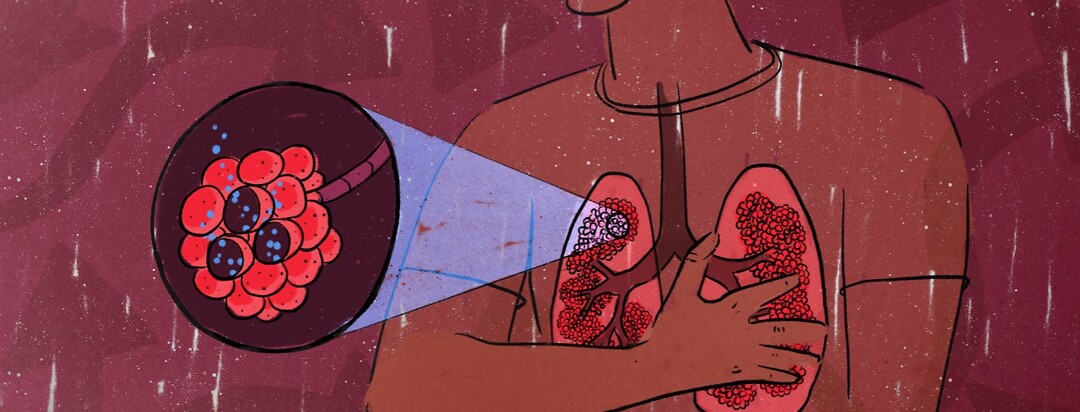What Are Alveoli?
They are called alveoli - small, grape-like clusters inside your lungs. They play a key role in the exchange of gases into and out of your lungs and this role is essential in keeping us alive. So, what exactly are alveoli anyway? Here's all you need to know.
Inside our lungs
The process of inhaling and exhaling air is called pulmonary ventilation, or just ventilation. This process is essential for life. It allows you to inhale molecules of oxygen and exhale molecules of carbon dioxide. Oxygen is an essential molecule for life and carbon dioxide is the waste product of cellular metabolism. Oxygen is inhaled and carbon dioxide is exhaled.1
I already talked about the path oxygen takes when inhaled through your lungs. You take in a deep breath and can feel fresh air enter your airway. It travels through your nose, pharynx, and larynx. It then takes a series of passages through your airways.
Airway passages get smaller and smaller until we reach terminal bronchioles. These are the smallest airways not to come into contact with alveoli. These airways are about the size of a the width of one hair. Their passages are too small to be seen by the naked eye.1 There are a substantial amount of terminal airways. To put the number into perspective, imagine over 30,000 terminal airways branching out throughout your lungs.2
Even smaller airways
These airways get even smaller which brings us to the respiratory bronchioles. These continue to branch out throughout your lungs and they come into contact with over 300 million alveoli. This is similar to the smallest branches of a tree coming into contact with millions of green leaves. You can picture these small balloon-like structures completely smothering the walls of respiratory bronchioles.1,3
Carbon dioxide takes the exact opposite path as oxygen. It's exhaled from your alveoli and moves up your airways, out your nose or mouth, and into the atmosphere. There is an impressive in and outflow of air with each breath. On average, most of us take 16 breaths every minute. If we live to the ripe old age of 80, we may take as many as 672,768,000 breaths. That's pretty impressive.
What are alveoli?
They are grouped together in small, grape-like clusters. Each individual alveoli is like a grape. From here, we can switch to our balloon analogy. The walls of each alveolus are made of elastin. This is a material like rubber bands. Elastin allows their walls to expand when you inhale as they fill with air. They then naturally recoil when you exhale and they empty of air.1,3-4
Their walls are made of special cells called type II alveolar cells. They secrete a special fluid to keep the outside of their walls moist and inside this fluid is a special substance called surfactant. It is a soap-like substance that reduces the surface tension of the fluid, making it so alveoli easily open with each breath.1-2
Alveoli walls are also made of elastic tissue. This allows them to easily expand like a balloon when you inhale and they fill with air. They then naturally recoil when you exhale and empty of air.1,3
The essential element of life is a molecule called oxygen. Oxygen is one of the components of the air you inhale. O2 molecules want to get out of alveoli so they go to the wall of the alveoli and pass right through it. So, alveolar walls are permeable, easily allowing oxygen to pass through them. From here they enter your capillary blood system.1
Capillaries and membranes
Capillaries are your smallest blood vessels. They are thinner than a piece of hair and cannot be seen by the naked eye. They are so narrow, in fact, that each blood cell must flow through them in a single file. Like respiratory bronchioles, capillaries branch out through your lungs and come into contact with alveoli. Also like alveoli, their walls are permeable to oxygen, allowing it to pass easily into capillary blood. This is how oxygen gets into your arterial blood. Interestingly, at any moment during your lifetime, over 900cc of blood is in contact with alveoli, participating in gas exchange.1
The wall of individual alveoli, along with the wall of an individual capillary, is called the respiratory membrane. This membrane is very thin which makes it permeable to oxygen. It is also permeable to another molecule called carbon dioxide.3
At the same time that oxygen travels through this membrane into a capillary, a carbon dioxide molecule travels across this membrane in the other direction. Carbon dioxide is a waste product of cellular metabolism. It travels through your venous system to your pulmonary capillaries. Here, carbon dioxide wants to jump out of the capillary into the alveoli. It does this by easily crossing the respiratory membrane.1
Important structures
Alveoli are pretty neat structures They allow for gas exchange to occur and allow you to get oxygen into your blood and carbon dioxide out of your blood. This is a mechanism that is essential to life. Diseases like emphysema reduce the surface area of alveoli which may impact gas exchange and cause symptoms. This is why it's so important that we understand alveoli and how they work.

Join the conversation